By Ismael Peña-López (@ictlogist), 13 March 2007
Main categories: Connectivity, Hardware
2 Comments »
Working with Information Society / Digital Divide indicators is a tricky thing to do, as definitions (along with technology) change in short periods of time. Some months ago, Tim Kelly asked me what did I consider “broadband”, as it was one of the hottest issues that researchers, in general, and the ITU, specially, had to deal with. Let’s see an example.
Broadband is defined by the International Telecommunication Union (ITU) Telecommunication Standardization Sector (ITU-T), in their recommendation I.113, as transmission capacity that is faster than primary rate Integrated Services Digital Network (ISDN) at 1.5 or 2.0 Megabits per second (Mbits)
. On the other hand, the OECD gives its own definition of broadband stating that for a service to be considered broadband, [the threshold] in respect to downstream access [should be up] to 256 Kbps
. The fact is that, as the OECD itself admits, Network operators widely advertise DSL and cable modem services to users starting at 256 Kbps as being
‘broadband’
. Actually, the Core ICT Indicators, promoted by the Partnership on Measuring ICT for Development — partnered by the ITU — also defines broadband as technologies that provide speeds of at least 256 kbit/s, where this speed is the combined upstream and downstream capacity
.
Summarizing, all of these are technical definitions, based on the fact of transmitting more than one data stream in the same wire by using different frequencies or channels. But for the not-technical user, broadband is strictly tied to “effective” speed, or, in other words, “subjective” speed: if your 1 Mbps is the slowest in town, it is no more broadband. This was Tim Kelly’s point last time we met.
Thus said — and leaving technical issues behind to focus in this “subjective” broadband perception — my proposal is to build a basket of tasks the way economists use to calculate changes in inflation based on a basket of products. Of course, this basket of tasks is also likely to evolve with time, but what is crystal clear is that the technical definition of broadband (the one about channels) is no more useful, and the decision to state that i.e. 256 Kbps is broadband should lean on objective basis more than “network operators advertisments”.
Proposal of a basket of tasks for a broadband definition
- Work in online, synchronous collaborative environments with rich media: VoIP, videoconference, screencasting, presentations/drawings…
- Work intensively/exclusively with online, asynchronous desktop/office applications: word processors, spreadsheets, math/scientific calculators…
- Usually access online applications with richest graphical content: SIGs and mapping tools, 2D and 3D simulators and environments
- Have online environments as primary communication and information channel: e-mail, instant messaging, browser and desktop widgets. It includes software downloads and updates.
- Manage a website: upload files, install applications, change configuration/setup. It does not include writing on a weblog/wiki and other low-tech “webmastering”
- Work with remote computers or in grid computing, including intensive use of P2P networks
This basket of tasks and the minimum speed required to perform them correctly/comfortably should help in setting the threshold of what we could call broadband. As those tasks will evolve dynamically along time, same will happen with the broadband threshold. As an example, some years ago you needed a then-so-called-broadband to check the Perry-Castañeda Library Map Collection when looking for geographical information, as most maps are some hundreds of Kb weight, being the heaviest up to some Mb. Nowadays, you would browse Google Maps, for which a today-so-called-broadband is required, maybe more than the “official” 256 Kbps to browse at ease.
Proposals, corrections, comments gratefully welcome.
Further reading
By Ismael Peña-López (@ictlogist), 09 March 2007
Main categories: Cyberlaw, governance, rights, e-Government, e-Administration, Politics, Meetings, Participation, Engagement, Use, Activism
1 Comment »
Held at the IN3 headquarters in Castelldefels, Spain, on Friday March 9th, 2007, this open workshop of the MODINIS project, Breaking Barriers to eGovernment, will focus on ways in which innovation can be and has been achieved in eGovernment to improve governance in the information age. How can the widespread diffusion of the Internet and Web enable governments to transform not only the delivery of public services but also approaches to governance? The project has already identified 7 key categories of barriers to the development of eGovernment across Europe. This workshop turns attention to approaches for overcoming these barriers to stimulate innovation. These approaches span at least four key categories: legislative, technological, citizen-centric and organizational solutions.
Here come my notes for the fourth part of the workshop.
Data Protection. Best Practices in e-Government: Real Experiences
Francisco J. López Carmona, Data Protection Agency of the Community of Madrid, Spain
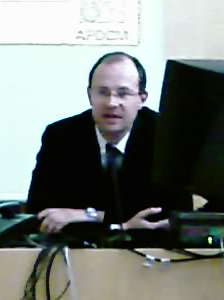 Francisco J. López Carmona
Francisco J. López Carmona
e-PRODAT is a European project aimed at promoting the exchange of knowledge and experiences between Agencies and other public bodies concerning the protection of personal data in Governments and Public Administrations, specially those related to e-Government, focusing in best practices in the sense of real world practices.
Public bodies must follow the law but also be cost-effective and act according to data protection while being realistic, practical.
Best practices areas: raise overall awareness among the citizenship, improve public information while providing public services, data needs minimization (optimization of data needs and managing, avoiding having to ask for more data each and each time, but also avoiding asking for more data on a “just in case” basis), ease the citizenship to execute his rights (in the field of personal data), let inclusiveness be an issue (data protection and digital divide).
Best practices identifies in e-Government and Data Protection: consent management infrastructures, privacy friendly identity management, data management, online services to citizens.
López Carmona briefly introduces dataprotectionreview.eu, a review whose name says it all ;)
Summary and Synthesis: Theory and Reality
Bill Dutton, Oxford Internet Institute (OII), University of Oxford, UK
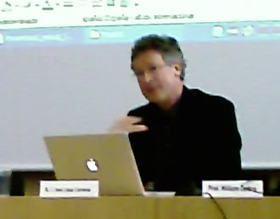 Bill Dutton
Bill Dutton
A first issue: e-Government should be a means, not a goal, but the matter is that due to e-Government we’re having data security concerns, hence e-Government debate is becoming a goal.
A second issue: noone can keep up with technologycal change. Passports were and have been unique IDs for years. Now, i.e. RFID based IDs will be obsolete long before they are even implanted. If technologies do not ease the way you’re doing things, what’s the sense in technology?
We’ve been talking about standards… but we cannot have one standard for each and every different service or public sector branch. This is not really one standard.
Change is right, but the economies of the public sector are not the economies of the private sector. So, efficiency should be though under this light, not under the competitive market light. And same applies when talking about ownership rights (i.e. of data).
Governments are due to provide (public) information to the citizenship, but the population does not go to governments but to “Google”, and this is a big concern in many ways: identification, trust…
Workshop. Fostering Innovation in eGovernment (2007)
By Ismael Peña-López (@ictlogist), 09 March 2007
Main categories: Cyberlaw, governance, rights, e-Government, e-Administration, Politics, Meetings, Participation, Engagement, Use, Activism
1 Comment »
Held at the IN3 headquarters in Castelldefels, Spain, on Friday March 9th, 2007, this open workshop of the MODINIS project, Breaking Barriers to eGovernment, will focus on ways in which innovation can be and has been achieved in eGovernment to improve governance in the information age. How can the widespread diffusion of the Internet and Web enable governments to transform not only the delivery of public services but also approaches to governance? The project has already identified 7 key categories of barriers to the development of eGovernment across Europe. This workshop turns attention to approaches for overcoming these barriers to stimulate innovation. These approaches span at least four key categories: legislative, technological, citizen-centric and organizational solutions.
Here come my notes for the third part of the workshop.
Identity Management (IDM) as enabler of e-Government
Mary Rundle, Berkman Center for Internet and Society, Harvard Law School, US
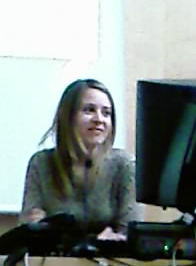 Mary Rundle
Mary Rundle
IDM is seen as part of the solution as governments try to: provide security (cybercrime, ISPs), guide foreign commercial relations, ensure reliable infrastructure, maintain jurisdiction (content, zoning), exercise monetary authority (flows, customs), ensure a clear system of property rights (IPR), recognize citizenship, facilitate relations between private parties (e-signature).
IDM systems: Federal Model (a third party or parties certificate your digital identity) vs. User Centric System (you hold your own digital identity). Which one is the best? How to bridge international personal data protections and the identity management infrastructure?
A proposal for an IDM system would be a CreativeCommons-like system that could be “human readable, lawyer readable, machine readable”, where all “features” (i.e. the data collected here can/will not be sold) could be tracked either by humans, at the regulation level or automatically by computers.
(Rundle gives a quick overview about NetDialogue)
Electronic Signatures
Miquel Peguera & Agustí Cerrillo, Internet Interdisciplinary Institute (IN3), Universitat Oberta de Catalunya
The researches present a study of the actual situation of the use of electronic signature in Europe, characterized by a trend to foster the use of e-signature:
- Strategies of electronic national ID cards holding digital certificates for authentication and signature purposes
- Legislative initiatives to demand specific procedures to be carried out electronically
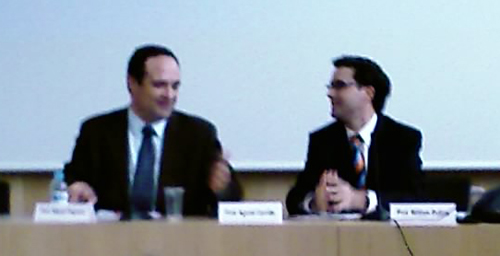 Miquel Peguera & Agustí Cerrillo
Miquel Peguera & Agustí Cerrillo
Electronic signature regulation is a basic issue to extend its use, because it allows guaranteeing the individuals and organizations’ rights, along with the proper use of the signature itself. In this field, there have been different ways to regulate its use, depending on who led a specific e-signature initiative, the already existing legal framework and the kind of system to be implanted (free access, login/password, certificate).
All in all, there is an evident lack of coherence and integration of systems all along Europe. Particularly stress is put in the fact that the choice of a particular system is directly related to the risks and menaces that this system brings with it, causing that overlapping systems might coexist to reinforce the strength of the protection.
To overcome e-Government barriers in the field of e-signature:
- There’s a strong need of political leadership, that should act as a motor of change
- Further from being only a duty, the use of the electronic signature should also be a right (fostering demand)
- Digital national ID cards, because of their major spread, are a good target to start with for e-signature purposes
- Also in the line of demand fostering, users motivation should also be enhanced
- Multi-channel delivery of e-government services requires different kinds of electronic signature with the same level of security
To conclude:
- e-Signature as a guarantee of the relationship among citizenship and the Government/Administration
- e-Signature as a mean to allow the citizenship enjoying their rights with confidence
Workshop. Fostering Innovation in eGovernment (2007)
By Ismael Peña-López (@ictlogist), 09 March 2007
Main categories: Cyberlaw, governance, rights, e-Government, e-Administration, Politics, Meetings, Participation, Engagement, Use, Activism
2 Comments »
Held at the IN3 headquarters in Castelldefels, Spain, on Friday March 9th, 2007, this open workshop of the MODINIS project, Breaking Barriers to eGovernment, will focus on ways in which innovation can be and has been achieved in eGovernment to improve governance in the information age. How can the widespread diffusion of the Internet and Web enable governments to transform not only the delivery of public services but also approaches to governance? The project has already identified 7 key categories of barriers to the development of eGovernment across Europe. This workshop turns attention to approaches for overcoming these barriers to stimulate innovation. These approaches span at least four key categories: legislative, technological, citizen-centric and organizational solutions.
Here come my notes for the second part of the workshop.
NOTE: concepts in quotation marks that follow refer to the seven key categories of barriers that can block or constrain progress on eGovernment
as stated in the Breaking Barriers to e-Government project.
Innovation in eGovernment: The Use of Geo-information
Sjaak Nouwt, Tilburg Institute for Law Technology and Society (TILT), University of Tilburg, The Netherlands
 Sjaak Nouwt
Sjaak Nouwt
Geo-information: where amb I, what is nearby, how can I go to… Those questions can be answered by Geographic Information Systems (GIS) — fed with professional data for a more professional use — and Location Based Services (LBS) — for a more personal use.
Examples of delivering e-Government via SMS (to specific locations or specifically located people): group SMS messages, SMS bomb, SMS-Cell Broadcast, SMS consultation, SMS prize draw, SMS Alert.
Technologies used to generate location information: Radio Frequency Identification (RFID), mobile communication networks (GSM, UMTS), biometrics, Machine Readable Travel Documents (MRTD, such as the electronic passport), Automated Teller Machines (ATM), Global Positioning System (GPS) or Galileo, optical object recognition.
Legal aspects: privacy law (protection of personal data, processing of location data, retention of traffic data), criminal law and criminal procedure, government information law, employment law, electronic commerce.
Organizational aspects (of sending SMS): inform others (“poor coordination”), choose appropriate topics (“lack of trust”), quick responds (“workplace and organizational inflexibility”), staf skills (“leadership failures”, “poor coordination”), resources (“financial inhibitors”), publicity.
Social aspects: digital divide (“digital divides and choices”), involvement of citizens, make citizens important (“lack of trust”), improve social safety, surveillance.
Online Job Search in the EU: The potential of Web 2.0
Rebecca Eynon, Oxford Internet Institute (OII), University of Oxford, UK
 Rebecca Eynon
Rebecca Eynon
Features of online job search: for job seekers, easy to find vacancies with additional guidance, with facilities to post CVs; for employers, facility to publish and manage job vacancies.
We do have stats about job search pages use, but they are not segregated and cannot know if people use public or commercial sites and if they use it to search or to apply for a job. On the other hand, while the use of those sites among the “employed+unemployed” category is more or less the same between countries (ranging from 20 to 30%), among the “unemployed” category the range varies a lot and goes from 40 to almost 90%, depending on countries.
Barriers to e-Government: Major competition from the private sector (“poor coordination”), public sites tend to be unimaginative and need to innovate (“workplace and organizational inflexibility”), costs of providing online search (“financial inhibitors”)
Potential solutions: co-operation with private sector, encouragement from central eGovernment
Web 2.0 applications are in general absent from e-Government, a major cause of public sector falling behind the private sector.
Workshop. Fostering Innovation in eGovernment (2007)
By Ismael Peña-López (@ictlogist), 09 March 2007
Main categories: Cyberlaw, governance, rights, e-Government, e-Administration, Politics, Meetings, Participation, Engagement, Use, Activism
3 Comments »
Held at the IN3 headquarters in Castelldefels, Spain, on Friday March 9th, 2007, this open workshop of the MODINIS project, Breaking Barriers to eGovernment, will focus on ways in which innovation can be and has been achieved in eGovernment to improve governance in the information age. How can the widespread diffusion of the Internet and Web enable governments to transform not only the delivery of public services but also approaches to governance? The project has already identified 7 key categories of barriers to the development of eGovernment across Europe. This workshop turns attention to approaches for overcoming these barriers to stimulate innovation. These approaches span at least four key categories: legislative, technological, citizen-centric and organizational solutions.
Here come my notes for the first part of the workshop.
Innovation in a Networked Society
Manuel Castells, Universitat Oberta de Catalunya y University of Southern California, USA
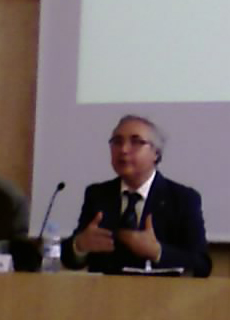 Manuel Castells
Manuel Castells
In the whole world there has been a deep evolution of power. At the international level, nation-states and international institutions do have to establish a new process of decision making that relies on the different stages of Administration (i.e. national vs. supranational), the powers of multinational corporations, NGOs (which Castells calls “new governmental organizations”, as most of them are subsidized by governments), etc. In the case of the European Union, the change is even more explicit due to the different treaties of the Union.
Thus, the centralized administrations of nation-states, have to set network channels to interact at both with sub-levels of public administration and with supranational levels of administration and international coordinating agencies.
The keys for success of e-Government are:
- Databases: The heart of network e-Government. Accessible and inter operable.
- Software: Customized applications. Inter operable, based on standards.
- New rules for administration relationships, fostering horizontal relationships among administrations. The network state requires a network administration which requires network technologies.
- Transparency: Every transaction should directly to an accessible, public record. And the more the transparency, the more (citizenship) participation. And the more transparency, the less corruption.
Some of the most important barriers for e-Government are:
Information, and possibility of access in an interactive way, is a pre-requisite for citizen participation. The state of things now is that it seems there is an ongoing process of administration networking among administrations, but not with citizens, besides one-way information systems.
Regarding technology itself, the problem is that lack of competence makes that the users (administrations) are not setting their IT strategies but tech providers. The Administration should have the autonomous capacity to choose and decide their best tech strategy.
Hierarchical organizations is yet another barrier. Based on asymmetrical information, uncertainty areas emerge and, hence, networks based on power over those areas of uncertainty appear. Notwithstanding, this structure does not fit with the technological structure of of records and data, that, by definition, reduce uncertainty. Resistance to lose power in one’s area of uncertainty is clearly a barrier for IT and network technologies spreading.
In the same way, the transparency that network technologies bring might be a menace for those not interested in having all their acts that much exposed.
Efficiency of the network administration sometimes contradicts autonomy for quick, onsite decisions. Efficiency is based on protocols, that cut autonomy. But flexibility helps autonomy. So the conflict is served.
Labour have to be skilled in digital technologies. But not just digital literacy, but also new processes of organization due to technological change. And most times, unions react against changes if those changes do not take into account workers’ rights.
Lack of interest and knowledge of the organization leaders. Without leadership, there’s no chance to overcome obstacles. And the problems are that (a) leaders don’t know and (b) leaders don’t trust the ones who know, because they don’t think this is that important
Bureaucracies are reluctant to risk, which is a must for innovation.
Innovation does require cultural, organizational and technological change are the fundamental pieces to begin change. Leadership, supported by participation of workers and users, is the way to fit goals with means. If bureaucracy is defined as the organization whose means are the goals (i.e. their goal is to keep the means, is to be a mean), here we have the main contradiction to solve. Bureaucracies should become innovative/schumpeterian bureaucracies.
Innovation in eGovernment in Catalonia
Marta Continente, Generalitat de Catalunya
The transformation of the Administration should be based on changing the demand, on knowing what the citizens ask the Administration.
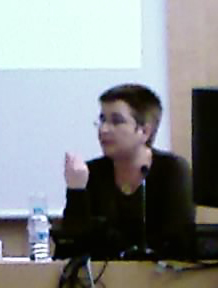 Marta Continente
Marta Continente
Three strategies that the catalan government is working in:
- Orientation to the citizen, multiplatform.
- Standardization, but with flexibility
- Decentralization, approaching the citizenship through subsidiarity.
Proximity should be a driver of the relationship amongst the Administration and citizenship. This means that the Administration should serve the citizen specially when he is not connected, but “on the street”. The territory is, hence, a very important variable when designing public services.
If we look at the stats, a high percentage of people search the Internet for information (including public information on public services) but, when asked about their how they’d like their relationship with the Administration, almost a 50% of them do want to go to the nearest office in their town. So, if we thing about going virtual, maybe we’d gain a couple of points to those stats, but we could be leaving behind half the citizenship.
The future of the Administration should be to provide “structural” data that the citizen can easily access, not only to perform tasks with the Administration itself, but to be able to comfortably “move” along the territory.
And along with the idea of participation, Web 2.0 is another of the priorities of Public Administration, letting the user — and this includes both the public servants and the citizens — fill in the public databases and apps with their own, collective, social information.
All in all, the big challenge is to be able to reinvent yourself every morning but keeping a global long term strategy. And this have to fit with your commitment with flexibility. All the actions, of course, have to be accompanied with changes in the regulation framework, and this does not only mean “the law” but all the existing applications that were not interrelated and now have to be.
Workshop. Fostering Innovation in eGovernment (2007)
By Ismael Peña-López (@ictlogist), 08 March 2007
Main categories: e-Government, e-Administration, Politics, Meetings
1 Comment »
On Thursday March 8th, 2007, a workshop on e-Government is taking place at the IN3 headquarters in Castelldefels, Spain, among researchers from the Oxford Internet Institute and the Internet Interdisciplinary Institute. Here come my notes for the second part of the workshop:
eLearning, Copyright
Julià Minguillón, IN3 vice director, begins the session speaking about e-Learning research at UOC, both a goal and a process at the same time
in our University.
Raquel Xalabarder introduces UOC’s projects on Intellectual Property Rights: whose is the ownership of works created in the University, what kind of use can be done of copyrighted material, what are the exceptions (i.e. fair use, educational uses). In her opinion open licensing is not a good solution as, in fact, what it does is not opening but putting more content under copyright: what should be done is to allow more (fair) uses by changing the law and letting out of copyright more and more works. In this aspect, the role of libraries would be crucial in spreading knowledge and content.
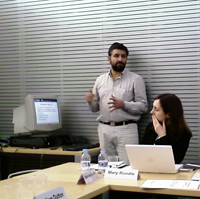 Julià Miniguillón and Rebecca Eynon
Julià Miniguillón and Rebecca Eynon
Regarding Open Educational Resources, UOC’s UNESCO Chair is supposed to be the place where all the research in the field should meet and be fostered. In this line, Rebecca Eynon talks about informal learning and how networking can be driven towards e-science, how people talk to computers
and what they do with them in terms of (self)learning. In Minguillón’s words, knowing our students, building a profile for them should be the first steps to personalize the teaching we want for them, customizing the one learning path to different learning paths according to the preferences and background of the students
.
Bill Duton says that the OII is deep into e-Science and Open Science, specially the ethical aspects of Open Science, confidentiality and so on. Authorship is another delicate issue in the field of Open Science or Open Educational Materials. Actually, the boundaries between e-Learning and e-Science are blurring.
Political parties, political participation
Albert Batlle and Ana Sofía Cardenal explain their research on political parties’ organization and political parties’ use of ICTs. One important side effect of this research is to discover the level of (cyber)activism around a political party and, depending of the degree of activism, try and see how ICTs are affecting the connection with this activism and how it determines the degree of (de)centralization of the party’s structure.
Rosa Borge, along with Clèlia Colombo, is analyzing experiences of (ICT mediated) political participation, and see how this participation changes according to the intensity of ICT use. Also, how municipalities are organized depending on the use of ICTs.
Steven Ward focuses on electoral campaigning and how parties use technologies to raise activism, to self-organize, etc. with special emphasis on how those technologies change the (pyramidal) relationship among the top direction of the party and the members and sympathizers. A good point is whether people are “activated” online or are contacted online after “activation”. Another point is how ICTs can improve the experience of collaborating with one party.
Bill Dutton puts the example of smartmobs and how researchers aiming to understand those movements should set up “firefight research headquarters” that could move quickly and study the target from within, on site.
Ward says that, notwithstanding, it looks like despite technology incredibly easing being connected one to each other and with the party, engagement with the party lasts less and less over time, and citizens just gather around projects or punctual campaigns, but not identify themselves with the party’s ideology nor with the party itself. I compare his statement with some findings of my research on e-Learning for Development, where there actually were some smartmob-like online volunteers that joined specific campaigns — what I called “Type I: Online Advocacy” volunteers — but there were also long term online volunteers — “Type IV: Pure Online Volunteers” — that were deeply identified with the way the NGO worked and even lasted, in their collaboration, longer than onsite volunteers. Thus, the problem might not be with technology/ies but with the parties themselves.
eGovernment indicators
To close the session, Ana Waksberg Guerrini says there’s a lack of a “network government” definition and how governments are transitioning from the bureaucratic, analogue form of organization to a more networked, digital one. It’s all closely related with efficiency, efficacy, public service. Are Administrations (net)working around projects the way the public sector does when it cooperates? Or they just stay within departments? How do we measure this?
OII-IN3 Workshop on e-Government (2007)










